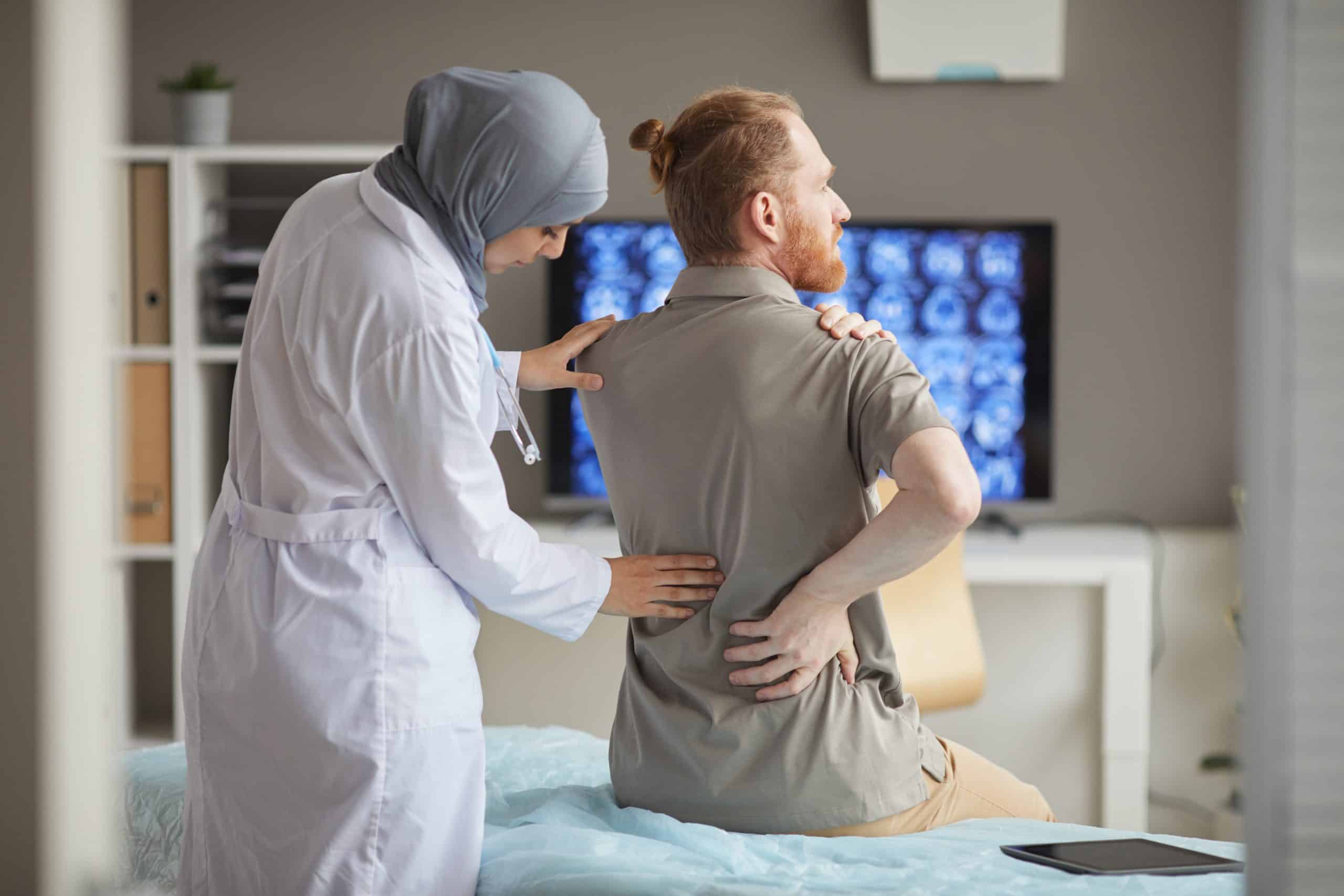Back pain and numbness in the legs are common concerns for many Wisconsin residents, especially as they age or stay active in the community. At Orthopedic & Spine Center of Wisconsin (OSCW), we often see patients struggling with these issues. One condition that frequently causes these symptoms is spinal stenosis, a narrowing of the spaces in the spine that puts pressure on nerves and can make simple movements painful and difficult.
Understanding spinal stenosis, recognizing symptoms, and knowing your treatment options can help Wisconsin residents reduce discomfort and stay active longer. The team at OSCW provides specialized care and advanced treatment options to support patients in managing these symptoms and maintaining a better quality of life.
What Is Spinal Stenosis?
Spinal stenosis happens when the spinal canal narrows and compresses the spinal cord or nerves. This may occur in the neck (cervical stenosis) or lower back (lumbar stenosis), caused mostly by age-related arthritis, disc degeneration, or injuries.
Common Symptoms to Watch For
- Persistent lower back pain and stiffness
- Weakness, heaviness, numbness, cramping or aching in the legs when standing or walking
- Relief from symptoms when sitting or bending forward
If you notice these warning signs, early evaluation by OSCW’s spine specialists can provide better outcomes.
People Who Are at Higher Risk
- Aging population with natural wear and tear on joints and discs
- Sedentary lifestyle contributing to weak supporting muscles
- Physically demanding jobs or hobbies involving repetitive motion
- Previous spine injuries or surgeries
“Spinal stenosis can significantly impact daily life, but with proper diagnosis and personalized treatment, Wisconsin residents can regain comfort and mobility,” said Dr. Jason Sansone, orthopedic surgeon at Orthopedic & Spine Centers of Wisconsin.
Treatment Options Available
OSCW offers comprehensive care for spinal stenosis, emphasizing conservative treatment first and advancing to surgery only if needed:
- Physical Therapy: Strengthens muscles supporting the spine and improves flexibility.
- Medications: Anti-inflammatories to reduce pain and swelling.
- Steroid Injections: Target nerve inflammation for temporary relief.
- Lifestyle Changes: Weight management, posture correction, and low-impact exercises like swimming or yoga.
- Minimally Invasive Surgery: Procedures to decompress nerves or fuse vertebrae when nonsurgical options fall short.
Spinal Stenosis Treatment Options Compared
| Treatment | Purpose | Ideal For |
| Physical Therapy | Strengthen muscles, relieve pain | Mild to moderate symptoms |
| Medications | Reduce inflammation and pain | Temporary symptom relief |
| Steroid Injections | Decrease nerve swelling | Moderate pain, temporary relief |
| Minimally Invasive Surgery | Remove pressure on nerves | Severe or persistent symptoms |
Living a Fuller Life with Spinal Stenosis
Don’t let spinal stenosis keep you from enjoying Wisconsin’s parks, lakes, and vibrant city life. Early care can help you stay active, reduce pain, and improve your mobility for years to come.
If you’re experiencing back pain, numbness, or weakness, don’t wait! Schedule an appointment with an OSCW spine specialist who can give a thorough evaluation and recommend the best treatment for your needs.
- Understanding Rotator Cuff Injuries: Causes, Symptoms, and Treatment Options - December 3, 2025
- Carpal Tunnel Surgery Success and Recovery Factors Explained - October 23, 2025
- Your Guide to Understanding and Managing Spinal Stenosis at OSCW - September 30, 2025

